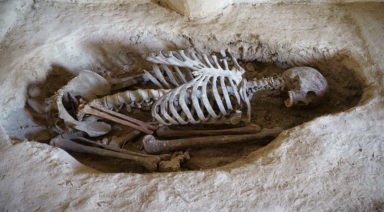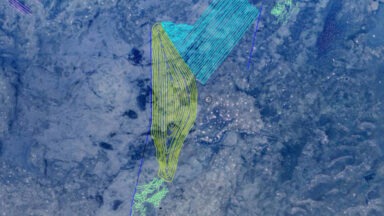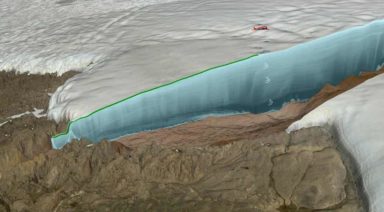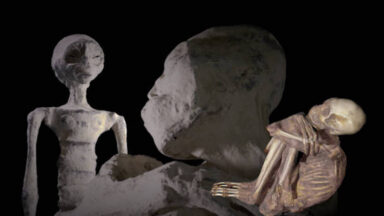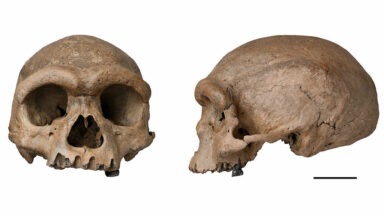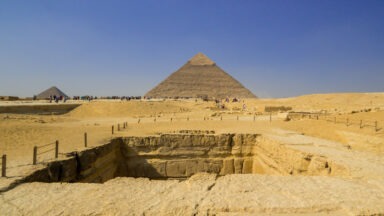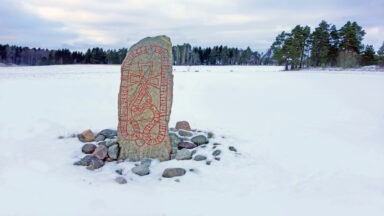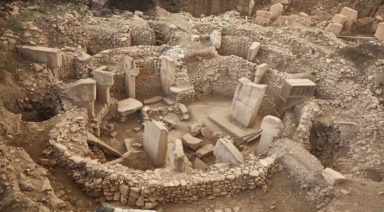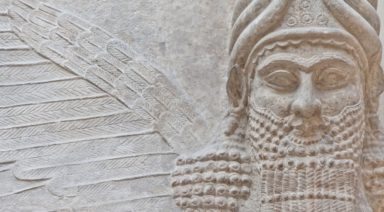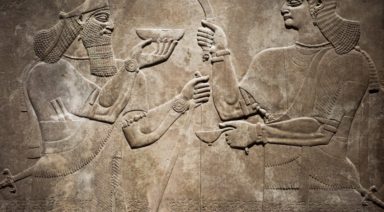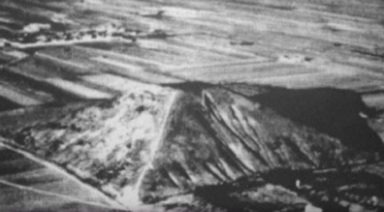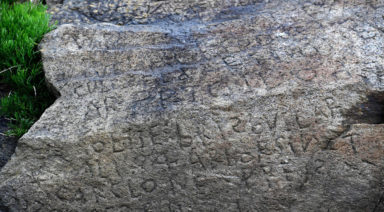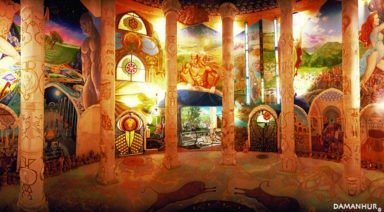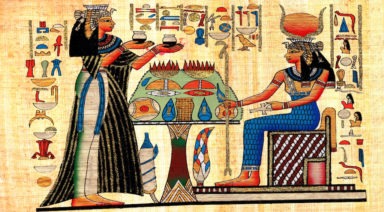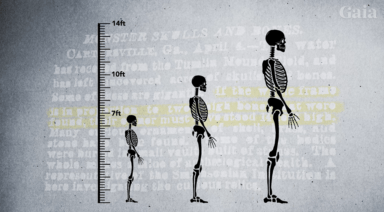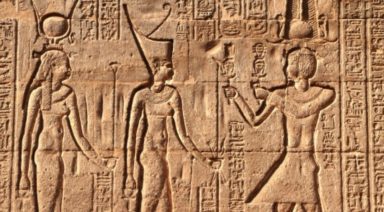Out of Place Artifacts; Who Really Discovered America?
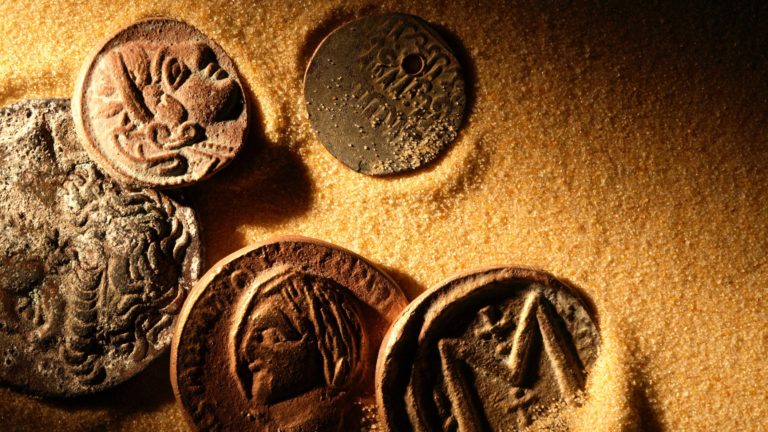
There are a number of details that run counter to Christopher Columbus’ discovery of the Americas glossed over in our society’s dominant narrative. The fact that he wasn’t the first old world explorer to discover the Americas is often met with strong resistance, despite numerous out of place artifacts and unexplained archeology telling a different story. So, who discovered the Americas?
Did Columbus Discover America?
The actual discovery of the Americas comes down to a matter of perspective. Obviously, the indigenous people already living in the Americas are the true discoverers, but from a European or old-world context the credit is mostly given to Columbus. But if the definition of making a discovery means understanding what you’ve found, did Columbus really discover America?
Columbus believed he had arrived in Asia and was interacting with the denizens of India, hence the name he gave them. He never understood that he had actually landed on an entirely different continent. But this is why America was named after Vespucci rather than being called Columbia, with his realized discovery a decade later.
It wasn’t until the 1960s that it became nationally recognized that a Norse explorer discovered the continent before these two Italian explorers. Leif Erikson and a small group of Icelanders landed in what is now modern-day Canada on the tip of Newfoundland. Erikson and company established a small settlement in a site called L’Anse aux Meadows, nearly 500 years before Columbus, in the year 1000.
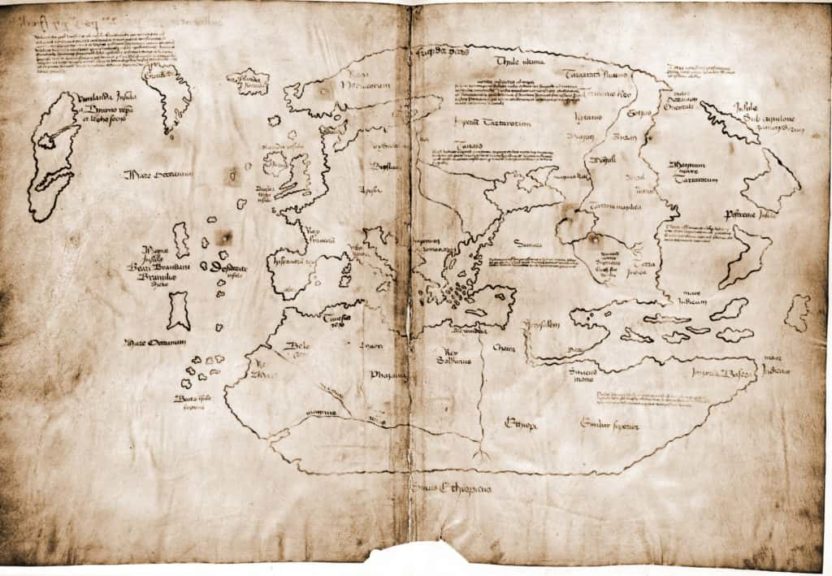
The Vinland Map
For a long time, this Norse presence was disputed as myth, until there was so much conclusive archeological evidence that history had to be reconsidered. One of these artifacts, the Vinland Map, showed cartographic evidence of the Norse discovery, though its legitimacy is still debated, despite carbon dating placing it at least 50 years before Columbus’ discovery.
Out of Place Artifacts
There have been a number of anomalous finds suggesting that the Norse weren’t the only ones to have predated Columbus in discovering the new world, making it possible that even Erikson’s landing was predated.
A number of discoveries involving Roman artifacts have raised archeologists’ eyebrows throughout both of the Americas. Unsurprisingly, these too have experienced dismissal and cover-up.
In Brazil’s Guanabara Bay a sunken shipwreck was discovered appearing to be the remains of an ancient Roman ship. Among the submerged ruins were a number of large terracotta amphorae, tall jars that were made during the Roman empire.
The jars were dated between the 1st century BC and 3rd century AD, definitively proving their origin from the Roman Empire. This type of pottery was used to transport anything from wine, to olive oil, and grains.

Their discovery was made by marine archeologist and treasure hunter, Robert Marx, who turned over the jars to the Brazilian government, under the assumption that he would have the opportunity to return to the site and explore further. When he returned however, he found that the Brazilian Navy had dumped silt over the wreckage, literally covering up his discovery.
When Marx confronted the Brazilian government, he said he was told that Brazilians don’t care about the past and they don’t want to replace Pedro Alvares Cabral as the official European discoverer of the country.
Marx was also given a bizarre story by a Brazilian businessman who said that he had ordered a potter in Portugal to recreate the jars and had sunk them in the bay to “age” them, but had only recovered a few. This absurd story was less than convincing to Marx, while the government’s response added to his skepticism.
There is other evidence of a Roman presence in the Americas further north at the Calixtlahuaca Temple in the Toluca Valley just outside of Mexico City. There, archeologist Jose Garcia Payón found another terracotta artifact that appeared to come from the ancient Roman Empire.
Payon found the carved head of what experts say is a depiction of a Roman during the Hellenistic period, around 200 AD. The head was found underneath two cemented floors inside a pyramidal structure, that had remained intact since before the Calixtlahuaca civilization.
Though no one has definitively answered the question of how the terracotta head made it there, a study by Romeo Hristov and Santiago Genovés proved its antiquity through the use of thermoluminescence dating. The authors used the most conservative timespan in their paper, dating the head between 870 B.C. – 1270 A.D.
This broad range still went counter to the arguments of detractors who believed the head to have been created during colonial times, while lending to the argument that it must have been of Roman provenance. But how did this out of place artifact get there?
Roman Coin in North America
Several caches of Roman coins have been found buried throughout North America, dating back to the 16th century. This has led many to believe that it could be evidence of a pre-Columbian European presence. While numismatists and archeologists are often skeptical, it has led them to at least examine whether there could be any credibility to this theory.
A study conducted by Jeremiah Epstein, details 40 reports of anomalous coins found throughout the United States, with some appearing in Native American burial mounds.
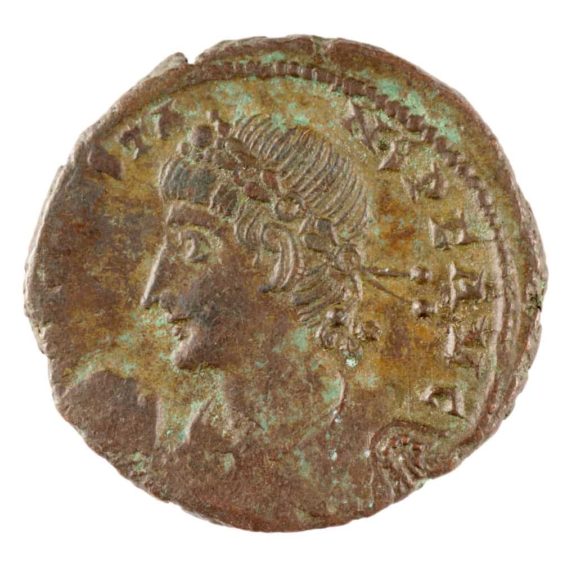
Roman Bronze Coin
Epstein noticed that the majority of coins found in excavations of land during construction or in backyards came from collectors or were deliberately placed as hoaxes. The discovery of several ancient Israeli shekels, known as Bar Kokhba coins, were one of the more intriguing findings as they were discovered in disparate locations throughout Kentucky.
These coins originally marked an Israeli rebellion against the Roman Empire and were only produced during a three-year period, from 132-135 AD. The coins turned out to be fraudulent or commemorative tokens given to Jewish immigrants, despite newspapers from the time of their discovery heralding them as being authentic.
Overall Epstein concluded that most of the coins were either lost in more modern times by numismatists or forged, but he was criticized by some colleagues for his negative and dismissive tone and that it was only a beginning for future study. What he did conclude was that there was a possibility that Roman ships may have drifted accidentally to the new world, but couldn’t necessarily be considered a probable explanation.
Though there was one man who set out to prove it was highly probable that old world explorers could make the journey across the ocean to the new world, whether accidentally or intentionally.
Thor Heyerdahl embarked on the Kon-Tiki expedition in 1947 to prove the possibility of a pre-Columbian journey, by constructing a raft made of materials only available during pre-Columbian times. Heyerdahl believed that pre-Columbian South Americans sailed and populated Polynesia, particularly Easter Island.
His expeditions proved that this would have been possible when the Kon-Tiki successfully sailed over 4,000 miles from Peru to French Polynesia. Heyerdahl’s success inspired similar expeditions between South America and Polynesia as well as another trip of his own from northern Africa to Barbados, to prove the ancient Egyptians might have had contact with pre-Columbian South American cultures.
With the physical feasibility proven and a plethora of evidence that pre-Columbian voyages were made, it seems that there may be more to the story than we’ve been told. This, combined with the number of out of place artifacts that have ben found in the Americas beg to ask who truly discovered the Americas. Is it just a matter of historical inconvenience or is there another reason that new world countries have trouble entertaining alternative timelines?
The Puzzle of the Kensington Runestone
The Real History of Giants Living on Earth
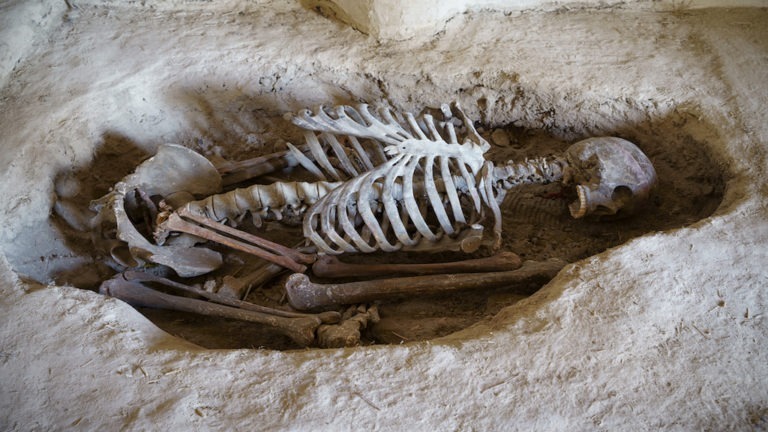
Humans have long expressed a fascination and fear around the question, “Were there giants on Earth?” Whether in legends or life, giants have been worshipped, reviled, ostracized, and celebrated. While the existence of dinosaurs is largely accepted, and millions of people travel across continents to marvel at majestic, larger-than-life monuments, the facts about human giants or giant races are up for debate. Regardless of whether they are dismissed as a myth or accepted as fact, giants represent important aspects of our individual and collective psyche. They capture our imagination, appear in religious texts, and drive scientific inquiry. But the question still remains — did giants once roam the earth?
Proof of Giants Throughout History
The concept of giants has been a part of human folklore and mythological narratives for millennia, resonating through various cultures and continents, from the Americas to Africa and from ancient Israel to the Norse. In the Americas, both North and South have indigenous legends speaking of giant beings, some even overlapping with interpretations of megafauna like mastodons that once roamed the land. The Native American tales often include references to a race of giants, which could be considered a cultural memory of these large prehistoric animals.
In Biblical Text
The biblical references, such as those found in the Book of Genesis, speak of the Nephilim, a race of giants that existed before the Flood. These beings have been subject to much interpretation, with some considering them metaphorical while others believe in their literal existence. David’s battle against Goliath is one of the most iconic stories of a human overcoming a giant from the Bible.
Around the World
From Africa to Germany, as well as in the Norse traditions of Europe, tales of giants are common, often tied to the creation myths and early histories of peoples. Native American folklore across various tribes frequently speaks of giants, who are depicted as powerful spirits or ancestors that roamed the land, some of whom interacted with the people, teaching or challenging them. In Egyptian mythology, the giant Geb, the god of the Earth, was often depicted as a colossal figure whose laughter was believed to cause earthquakes and whose body formed the hills and valleys of ancient Egypt. Perhaps no culture is more richly intertwined with tales of giants than that of the Greeks, from the gods of Olympus to their offspring, such as the Cyclops.
Giant Skeletal Remains
The Smithsonian Institution in the United States, along with other scientific bodies, has been involved in the study of large humanoid bones that have been discovered, often shrouded in mystery and sometimes labeled as hoaxes. Newspaper articles from the 19th and early 20th centuries in New York and California frequently featured stories of giant skeletons unearthed, fueling speculation about ancient giants on Earth.
Extraterrestrial Theories
Theories about ancient aliens, as seen in various full episodes of Beyond Belief or popular documentaries, sometimes suggest that these giants were extraterrestrial visitors, while others propose that they were simply larger human beings that lived in ancient times.
Skepticism remains high, with many of these stories considered hoaxes or misinterpretations of archaeological findings. The search for evidence continues, with enthusiasts combing through books, historical newspaper articles, and religious texts like the Christian Bible and the Book of Enoch for clues.
Modern Giants, A Brief Look at Gigantism
Merriam-Webster defines a giant as being a “legendary humanlike being of great stature and strength,” as well as “a living being of great size.” In physical terms, a giant is a person over seven feet tall with a condition known as “gigantism.” The tallest person documented in modern history was Robert Wadlow (1918-1940), known as the “Alton Giant,” or the “Giant of Illinois,” who stood 8 feet 11 inches tall.

Robert Wadlow, the Alton Giant
Wadlow intended to study law but lived as a celebrity after traveling with the Ringling Brothers Circus and as a spokesman for giant-sized shoes. He died at a young age, an all too common end for those with gigantism — their weight and size put constant strain on the heart and skeletal system.
Today, genetic giants are gaining acceptance because, overall, humans have evolved into a taller species. According to Max Roser, an economist studying global standards of living conditions, between 1810 and 1980, European male height grew from an average of 160 centimeters to 185 centimeters. But despite this acceptance, giants can still find life in a normal-sized world stressful and lonely and, like Wadlow, are treated as an oddity. This contradiction doesn’t exactly mirror how giant races have been regarded throughout history.
Did Giants Live on Earth?
In the realm of archaeology and anthropology, there is no credible evidence to suggest that a race of giants once inhabited the Earth. The large bones sometimes purported to be from giants have typically been identified as belonging to prehistoric animals like dinosaurs or mammoths.
However, tales of giant humans across the earth, whether rooted in mythology, religion, or speculative history, continue to intrigue us. From America to Africa, and from the annals of the Smithsonian to the pages of the Christian Bible, the concept of giants weaves a complex tapestry of intrigue, belief, and scholarly curiosity. Whether these stories emerge from real giants or are simply metaphors within cultural histories, they remain a compelling part of our collective narrative.



